
guecho Spanish family name. Population - 77,946.
Sep 2023+

Two return tickets to 'Get-Zo' please...
Erm, 'Get-Zoo?'...
It's all right, Bob's got this... 'Get-Shoe?'
Well, that's saved you a few bob because the driver's just kicked you off their bus. Three strikes and you're out in this area north of Bilbao and you'd be on all day with this one. It's pronounced 'Jhehtsow', or something, and you've gotta love that Basque, right?
You're only here because the lady in Bilbao's tourist information has handed you a booklet with a 'You'll be needing this' when you tell her you're here for four days. Some day trips are being suggested, you see, not that it's necessary, there's more than enough to see and do within the city limits and that doesn't even include the Guggenheim.
How about San Sebastian? That's a three-hour round trip for some tapas and something similar time-wise to Guernica, which, having seen a picture of it, actually looks a bit scary.
This here, however, is doable by local metro and, besides, there's a not-often-seen transporter bridge that looks like it needs a right good looking at and comparing to with the one in Middlesbrough.
You'll find the Bilbao-Abando train station by heading over the bridge after breakfast in the Erribera market and heading up through an edgy area with a whiff of you-know-what in the air.
It's not to be confused with the smaller La Concordia station nearby on the river, a grand, turn-of-the-20th-century gesture when Bilbao boomed with the industry.
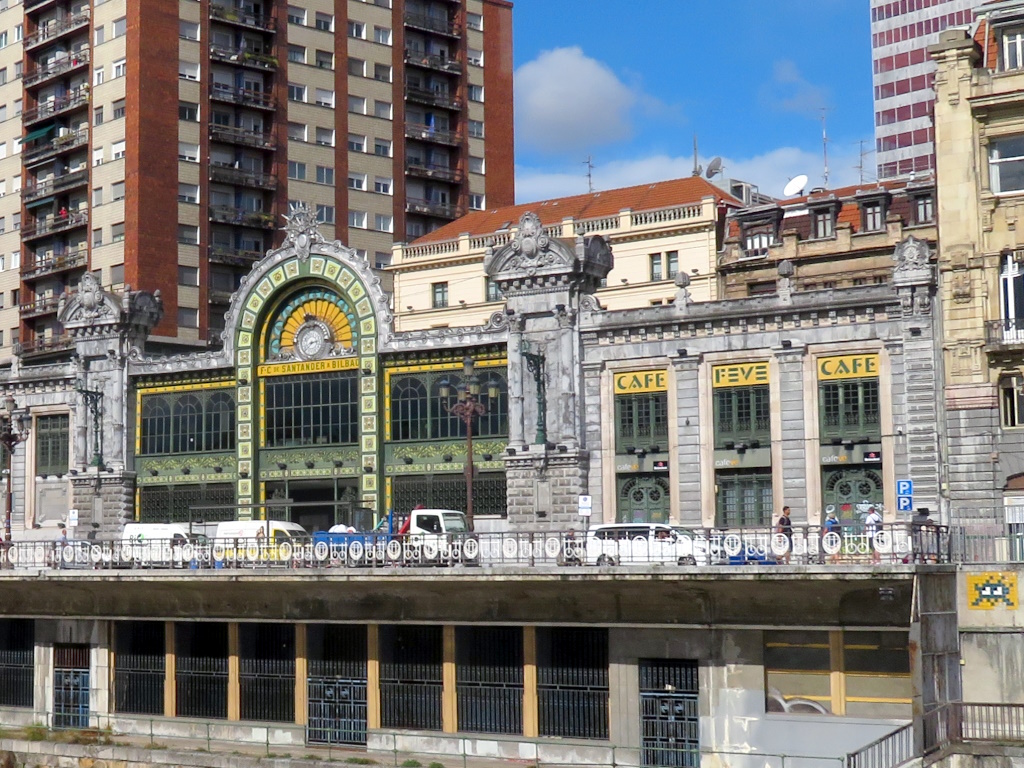

Abando's glass is rather more recent at post-war but makes for an illuminating start while you figure out how to buy a ticket and ponder Europe's obsession with validating the bloomin' thing, right leavers?
The Guggenheim may inhabit reclaimed, industrial land but plenty is still being put to use on the west side of the River Nervión. That means it's more gritty than pretty on the way up to the Atlantic and Santurtzi, very nearly but not quite the end of the line. The hills on either side, however, combine to create quite a -scape, not shown.
Santurtzi isn't nearly so 'charming' as sold, its fishing industry and maritime links translate to being more of a port. While St. Andrew gets the gig in Grimsby, the Virgin of El Carmen, and not Neptune as was thought from a distance, is considered by the Spanish to be the patron saint of sailors.

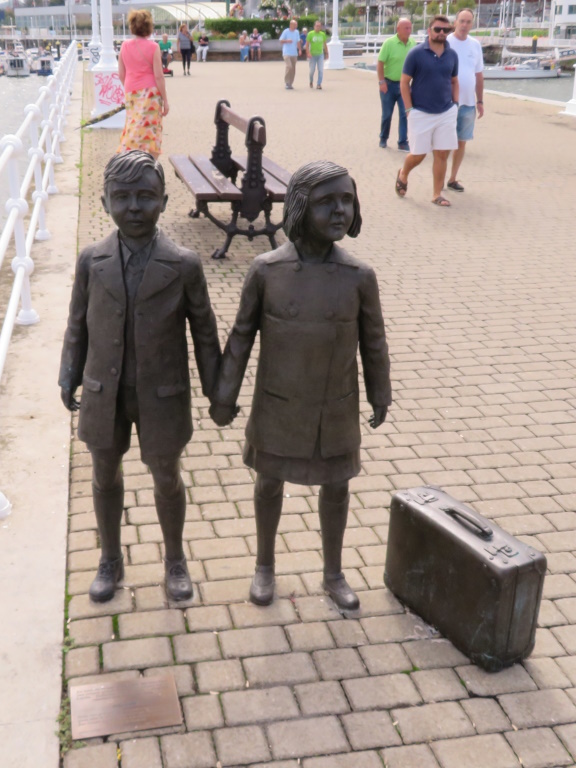
And where's this little fella and his sister off to on their holidays? Turns out this scene isn't quite so innocent, they are two of nearly 4,000 child emigrants evacuated from this very spot in 1937 to escape the civil war, Guernica and all that.
The destination was Southampton and the majority were returned in 1939, just in time for a global conflict. A couple of hundred, however, remained dotted around the UK with their grandchildren now taking their holidays, ironically, in Benidorm, probably.
The restored, municipal building on the quay houses a maritime museum, full of tragic tales of fisherfolk, no doubt, as well as celebrating the sardine, which you can buy from an adjacent market, when in season.


The colourful mural by the slipway isn't from the Dulux™ waterproof range. No, look closely and it's a tiled mosaic depicting a rather romantic view of some pilchard pilfering.
What with this and a now-known public space in which to get your bearings before pressing on, this has actually turned out to be quite charming, actually.
You can just about walk out into the Bay of Biscay on a concrete pier but a far better option is to promenade south by the river for less than a mile towards Portugalete. If only there was some way across?
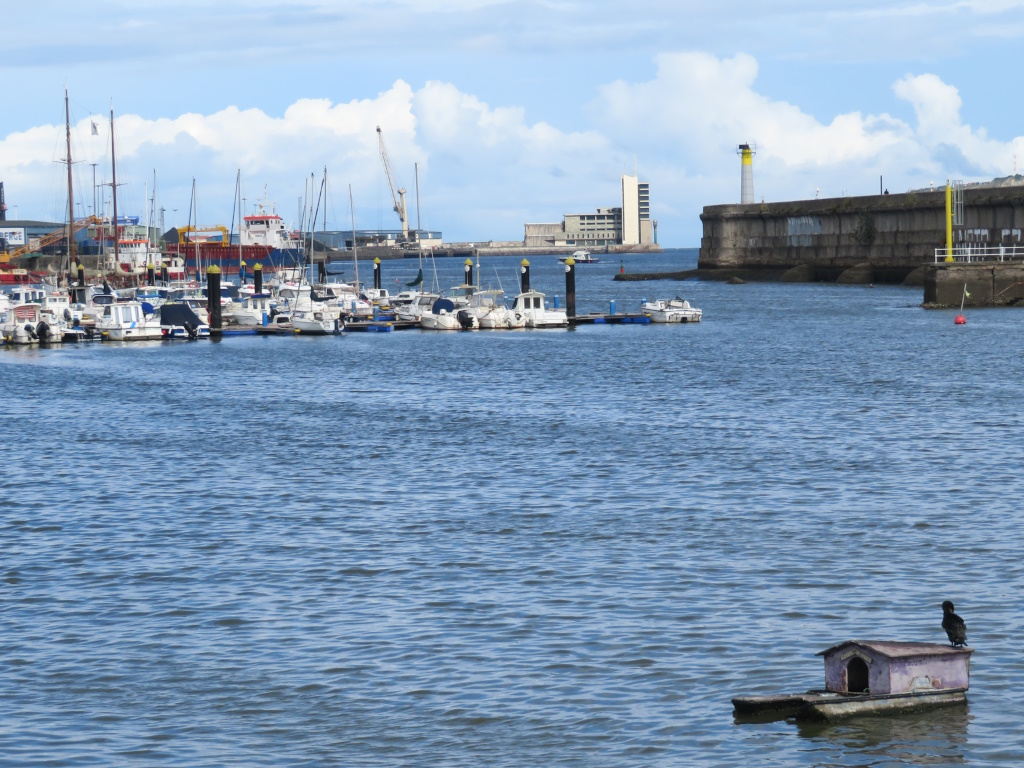
Of course there's a bridge but not just any old bridge, here be a transporter bridge like the one they've got down the 'Boro.
The Bizkaiko Zubia is the oldest of its type in the world but not as high or wide as the one on the Tees.
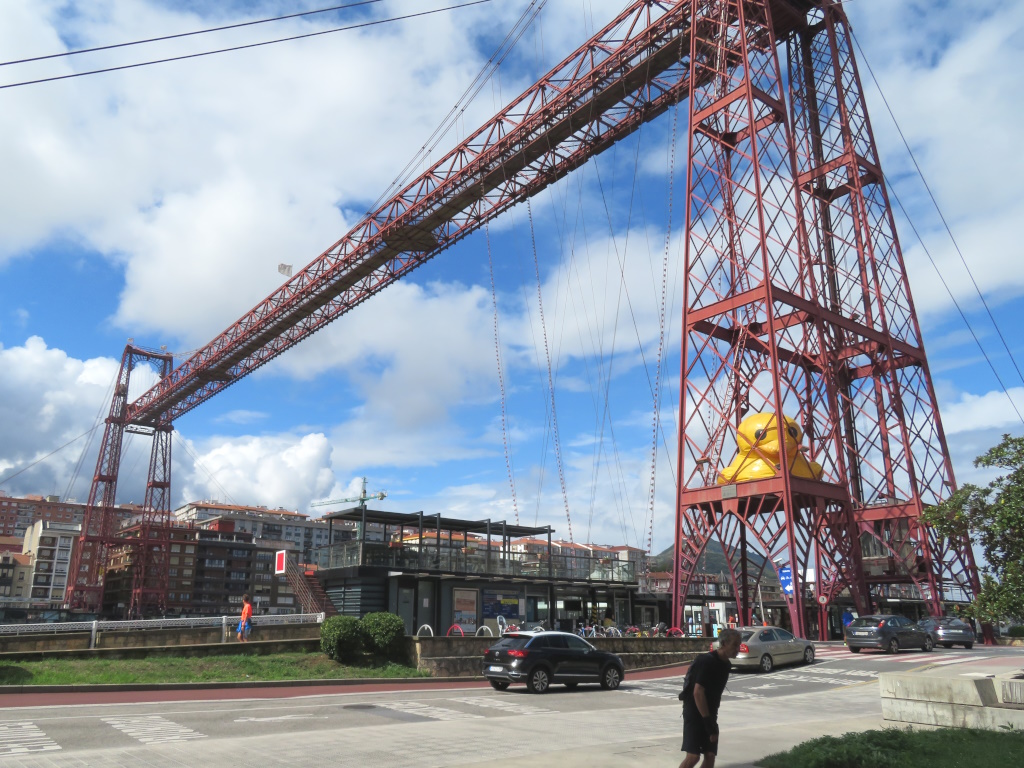
It can carry a similar number of passengers but accommodates slightly more cars and daredevils can pay to walk over the top, as you could once do in Cleveland.
The damning statistic, however, that pips the one in Port Clarence is... this one works!
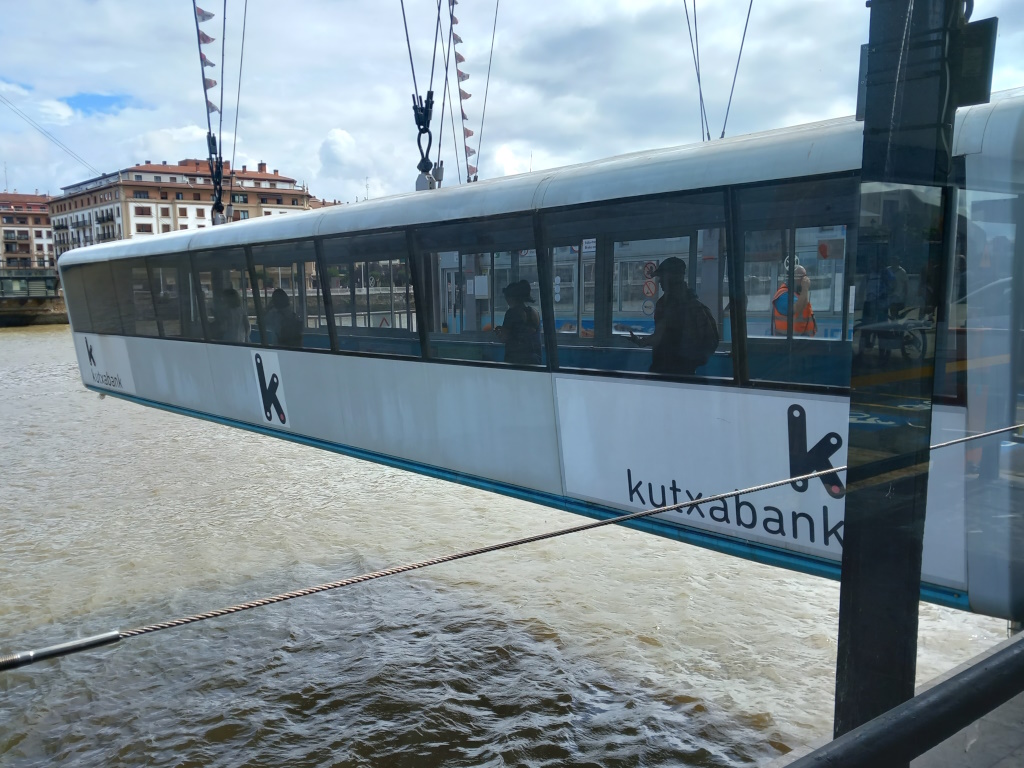
The largest, by the way, is in Newport, Wales but SlyBob don't live and haven't been nowhere near there so wouldn't know nothing about that.
It is or was only €1 across into what's thought to be Getxo but, get this. Getxo might be a town or it might be a municipality, the only thing that is known is it ain't got no metro station and we'll be needing one of these for phase II of the afternoon.
Areeta, on the other hand, does have a metro station nestled amongst that comforting Euro-familiarity that's colourful and mostly modern.


This is the start of and part of a larger suburban area, which is what Getxo might actually be, and it's modern because not much of it is more than 100 years old. The Bilbao bourgeoisie, you see, started moving here in the early 20th century with their new-found industrial wealth and it's still one of the swankiest areas in these parts.
It's four stops north to Algorta, another one of Gexto's suburbs, and first impressions are that we've gotten off at the same stop we got on. Charming, fishing village bait has already been taken, hook line and, in Santurtzi but something similar has been promised here, yeah right.

Persevere beyond the modern surroundings and wrong turns to somehow arrive at somewhere with a bit of age to it. The San Nikolas Plaza where the portico of the church is being used as a practice pad for players of pelota or Basque tennis if you'd rather.
Follow Aretxondo Kalea downhill until things turn all whitewashed and here we are, the start of the area around the historic harbour and the very same that was sold in that booklet.
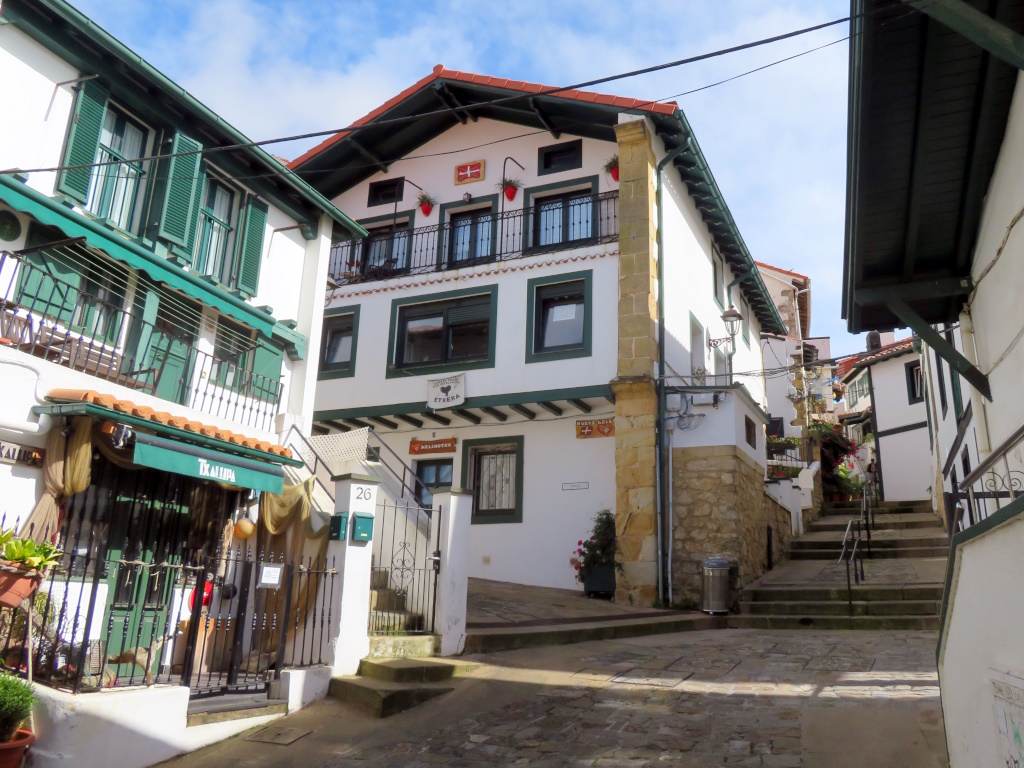
It's a million miles, well, less than a quarter of a one, actually, away from Algorta's 20th-century constructions to some from the 17th, they say. A handful of knick-knack providers and tabernas are now the norm including some top-notch pintxos at Bar Arrantzale in a delightful, outside surrounding.
As for the harbour, well, following industrialisation of the whole estuary, it's not much more than a car park and a sea wall similar to Santurtzi's, these days.
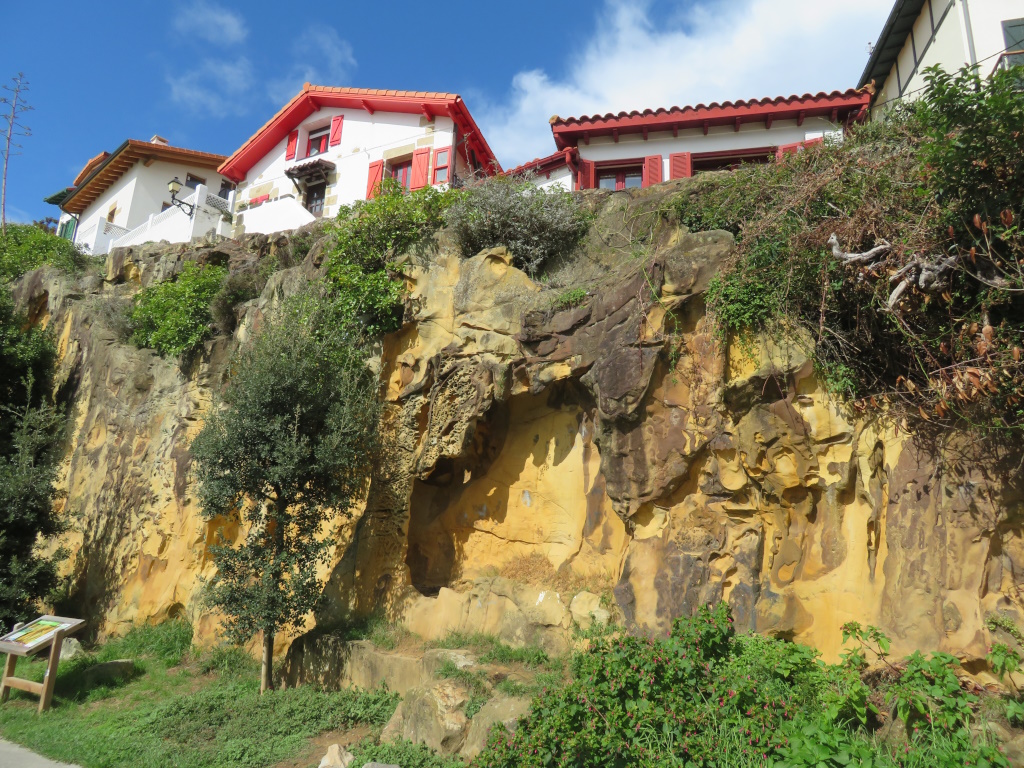
The residents upstairs, however, are grateful for the concrete since this sandstone won't last forever against any crashing waves.
There are a couple of beaches close to hand, north and south, but nobody's here for a playa because, is that a, no it can't be, a windmill?

They've even listed this as an attraction although, in fairness, the Aixerrota mill is pretty old at 1720. The grinding has long since halted but it's the last one standing in Getxo due, no doubt, to Don Quixote never making it this far north even though he was tilting over 100 years earlier, had he been real, that is.
The windmill, of course, a metaphor in deluded Don's mind for technological progress, which is a bit like SlyBob because you won't find none of this nonsense on the TikTok™.
Halfway along the Playa Arrigunaga are a handful of fleshpots overlooking the serviceable beach and sea and what might pass as a village green. Here they'll let you sit outside and the device you've been handed to tell you when your sandwiches are ready is called a 'ding-ding' in Basque, apparently.
The mill marks the start of a rather marvellous, tree-lined, sloping path that some out-of-sight locals and other Euro-ramblers are putting to good use.

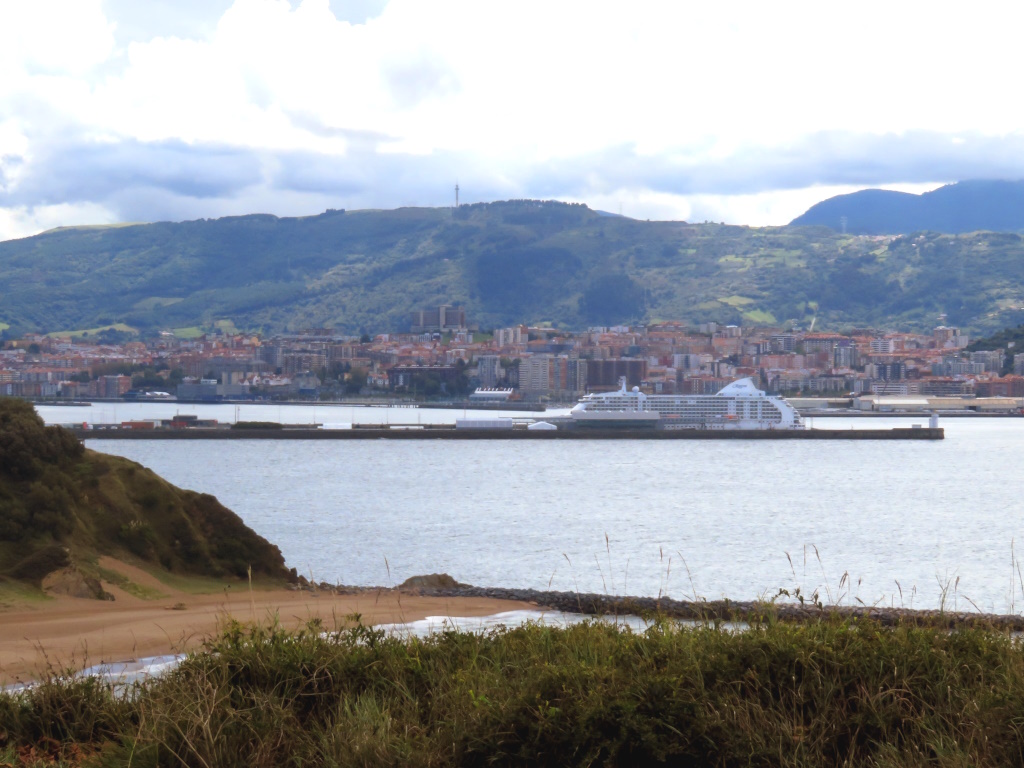
The cliffs have kicked in by now, you see, so it's gently uphill for views back to where you were this morning and Bilbao's cruise terminal.
Frequent ding-dongs with the French in the 18th century called for a fort on the Galea peninsular.

Not so much insurgents, it's likely to be surfers who can be seen from up there, these days, the geography of the cape combining with the currents to create near-perfect conditions, they say.
Not that you'll see anything from up there, though, it's all locked up, this time from the outside, to fend off local boozehounds and spray painters.
It's roughly the same distance again to a disappointing lighthouse in a housing estate, not shown, and where the coast kinks round so the views are out over the Bay of Biscay up to Brittany, not seeable.
That, however, would mean dropping down only to have to come back up again so if you're not that way inclined then it's time to head back with Algorta and the beach in sight.

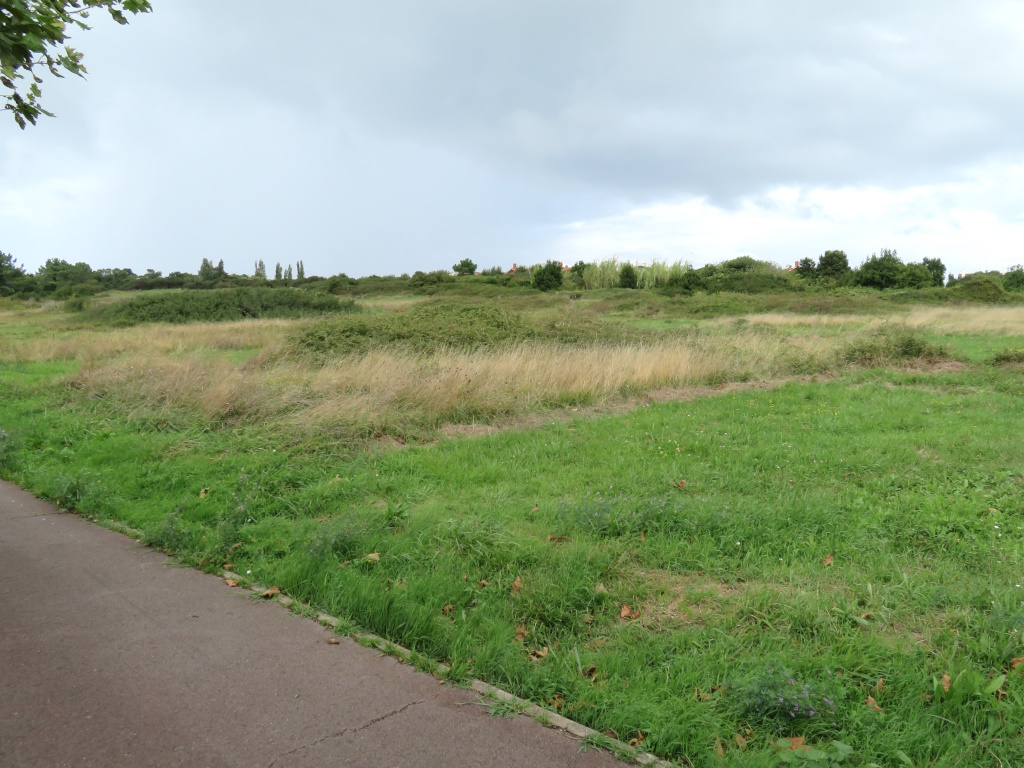
This is advertised as a hiking area and the terrain is best described as clifftop heath where this patch would surely have been repurposed as a golf course on a respective coast back home, probably?
It clearly isn't a golf course but oh! Hang on! If you do head further on down, there is one and that should be a clue. The housing estate mentioned is one of Getxo's most desirable location, location, locations and this is one of the wealthiest areas in the whole of Spain, no less.
Not that Northern Spain is thought to be particularly associated with golf, or is it? Severiano Ballesteros, RIP, hailed from Santander, only 50 miles west, so he must have practised his putting here or hereabouts?
This is the sort of stuff that booklet should be selling and after nearly a full day out, phew!, this last bit, apart from the bridge, has been by far the best. The Getxo Turismoa Board are welcome and they might even clarify where or what Getxo actually is, SlyBob still aren't exactly sure.
What is known is that if you don't want to head all the way back to Algorta then the nearest metro station is now Bidezabal.
Now, you try asking for two return tickets to that!
